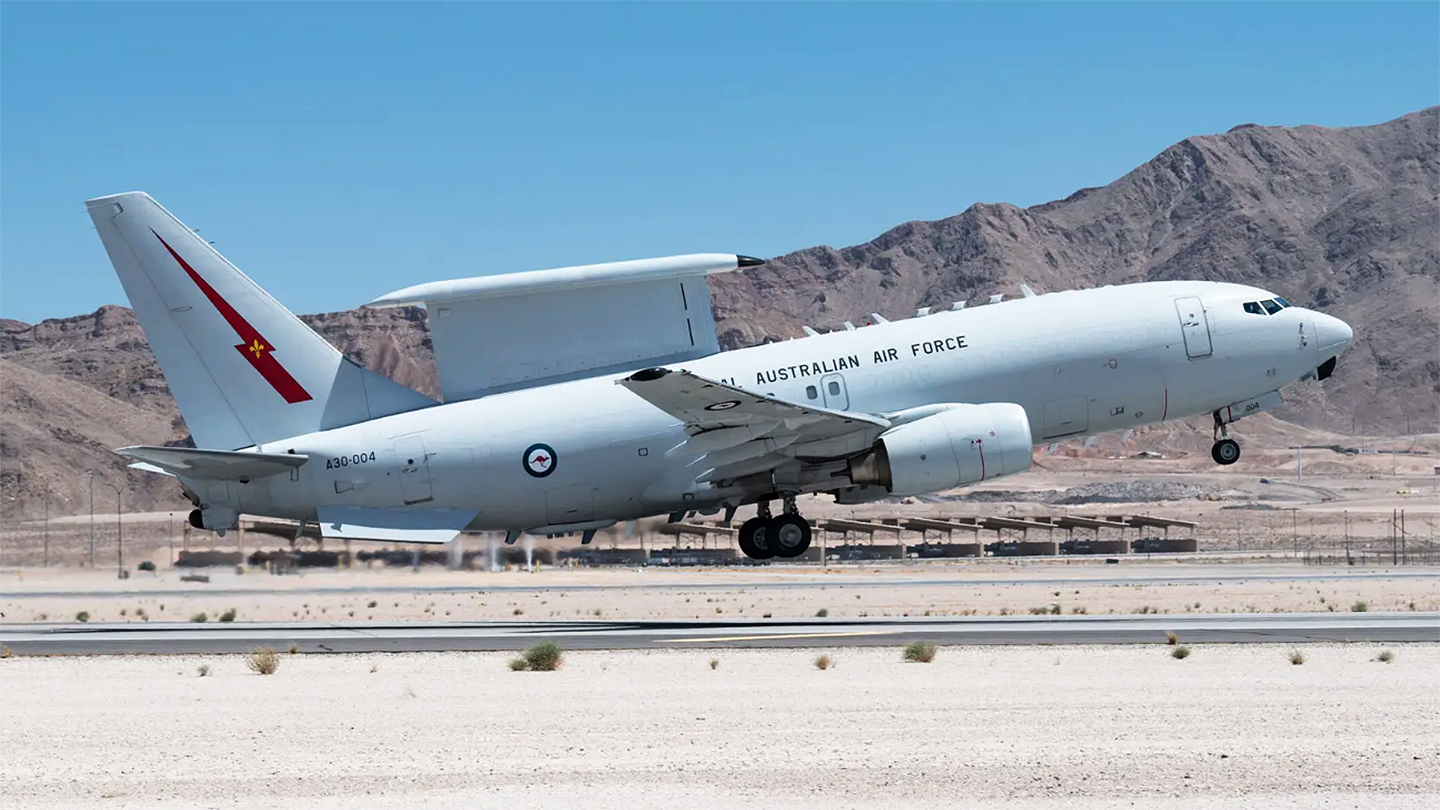While still a relatively young endeavor, the U.S. Air Force’s Black Flag large-scale test and evaluation exercise is going from strength to strength, the latest iteration, which took place last week, being the first to involve international participation, in the shape of the Royal Australian Air Force, or RAAF. The War Zone spoke to two key Air Force officers involved in the running of the exercise, which also reflects the Pentagon’s increasing focus on developing resilient, long-range capabilities that could be brought to bear in a potential future conflict with China.
While we have examined the origins, evolution, and major expansion of Black Flag in the past, the exercise is once again evolving in such a way that will make it even more invaluable as a developmental and training tool.
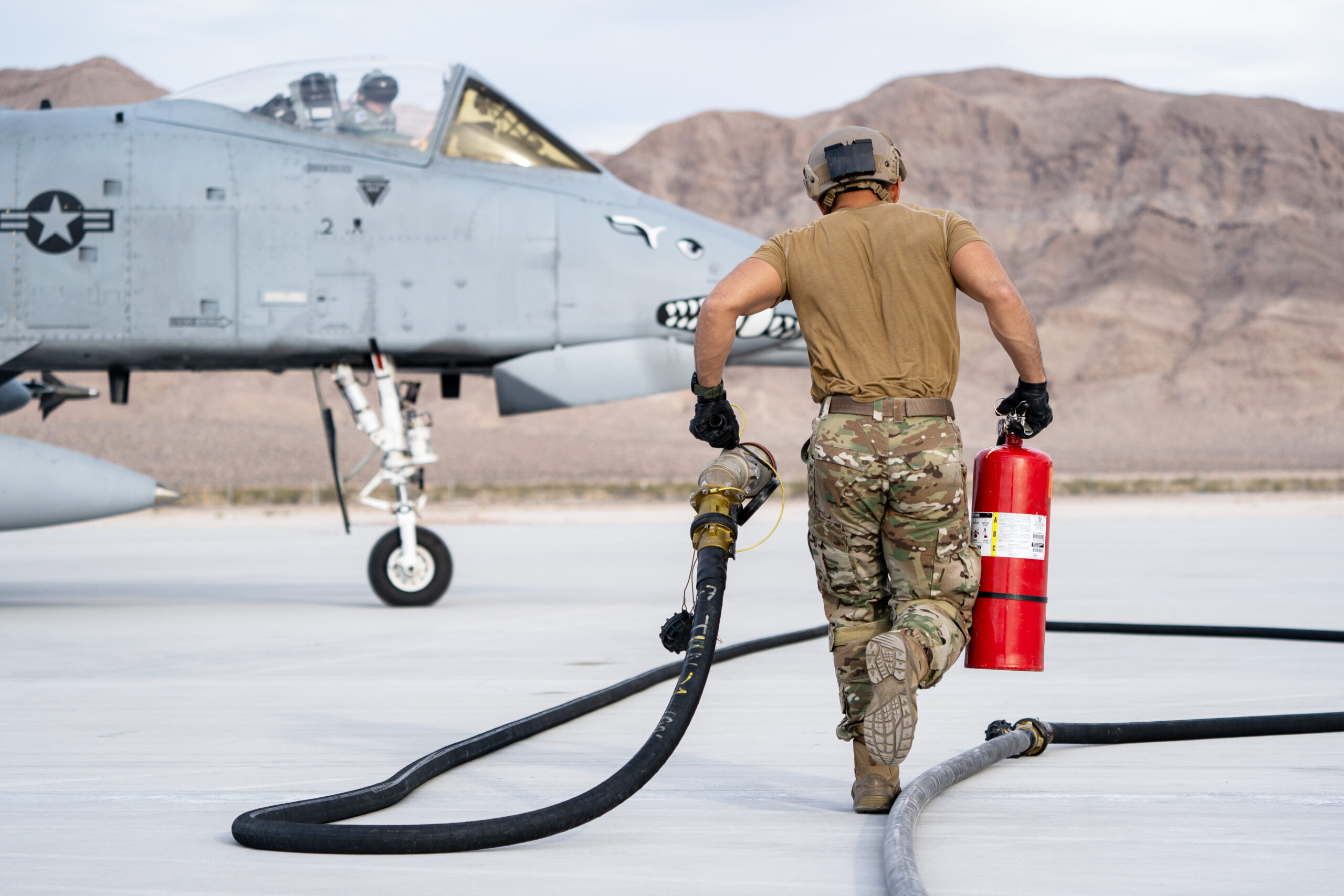
Maj. Theodore “CINC” Ellis, the weapons officer at the 53rd Wing that’s responsible for Black Flag explained how it began as a Large Force Test Exercise (LFTE) within the 53rd Test and Evaluation Group (TEG), the component of the wing that has the hugely important task of developing capabilities and tactics to be used across the Combat Air Force. That wide-ranging remit means the 53rd TEG runs operational test campaigns for the A-10, F-15C/E/EX, F-16, F-22, F-35, MQ-9, HH-60G/W, and HC-130J Combat King II platforms, as well as evaluating these assets’ weapons, mission planning systems, aircrew flight equipment and more.
“This whole thing started off inside the 53rd TEG,” CINC explains. “We just called it LFTE, and it was a chance for us to get most of the 53rd Wing assets together in one place to do integrated test, instead of doing one-off tests.” Starting out in around 2017, LFTE quickly started to evolve, with a growing focus on how to integrate assets across the entire wing. Ultimately, it became a named exercise, moving from its grass-roots foundations to an exercise fully resourced by Air Combat Command (ACC).
Today’s Black Flag is primarily an ACC and operational test event centered upon Nellis Air Force Base, Nevada, and run on the adjacent Nevada Test and Training Range (NTTR). As CINC puts it, “We take what we have, apply a realistic adversary to that picture and fight against that adversary to see if these tactics, techniques, and procedures [TTPs] work.”
As well as the standard Black Flag large force exercises, usually held twice yearly, there is a roughly similar number of so-called banner events, which take a subset of the LFE package and focus on that specifically. Last year, for example, the 53rd TEG hosted a Rescue Banner, focusing on maritime combat search and rescue (CSAR).
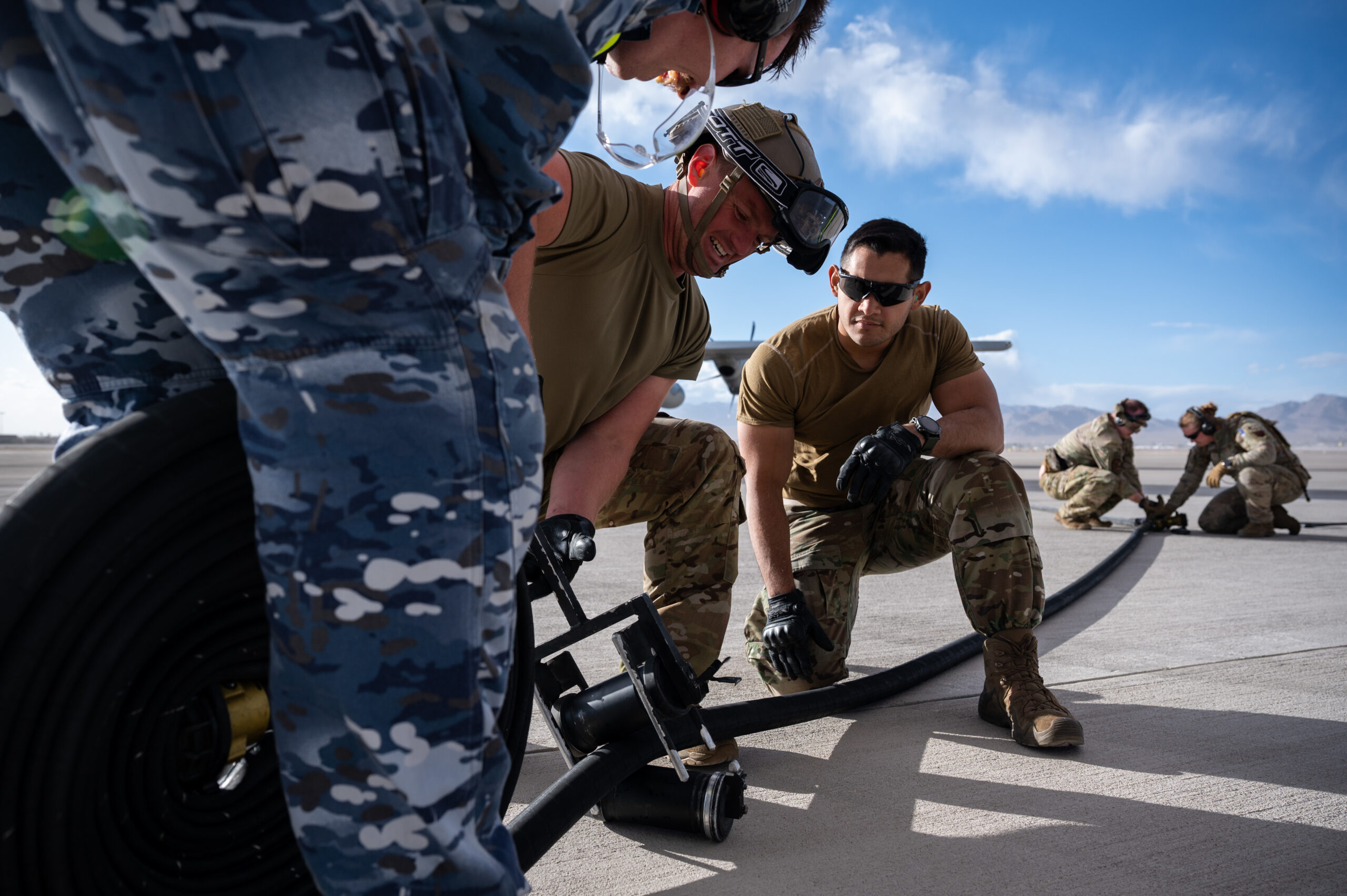
Meanwhile, other exercises in the test flag roster include Orange Flag, what CINC calls “the original test flag.” This is run out of Edwards Air Force Base, California, where the 412th Test Wing’s exercise focuses on interconnected survivability and lethality between friendly forces. Using instrumented datalink networks, Orange Flag serves to answer questions such as ‘Can my jet talk to this thing and how does it work?’ Unlike Black Flag, Orange Flag is a development test-led exercise, although it does still have input from the operational test community.
As far as Black Flag is concerned, Orange Flag plays a very important role in ensuring that all those intricate connections between different assets are working reliably by the time they reach the operational test part at Nellis.
Then there is Emerald Flag, the responsibility of the 96th Test Wing at Eglin Air Force Base, Florida. Here there is more of a command-and-control focus, with the aim of proving out the Pentagon’s emerging Joint All-Domain Command and Control architecture, or JADC2, which aims to connect sensors from all U.S. military services into a single network. Again, there is an emphasis on using datalinks to prove these capabilities as well as exploiting the 120,000-square-mile Eglin Gulf Test and Training Range.
Sometimes, different test flag events have been brought together to maximize the learning potential, as was the case last year, when Orange and Black Flags were combined over the R-2508 range complex in California and the NTTR. This event focused on ‘kill-web’ integration and survivability for stealthy platforms against high-tech adversaries and you can read more about it here.

As for the latest Black Flag 22-1, which took place May 9-13, this was the first of these exercises to be run on a coalition basis. Although the United Kingdom had been invited take part, the timings didn’t work out this time round, although it’s significant that the planners were looking to leverage the new trilateral defense cooperation pact, known as Australia-United Kingdom-United States, or AUKUS, that came into being last year.
“Our ability to integrate is a requirement,” says Col. Matthew J. Bradley, the commander of the 53rd Wing. “I don’t think the United States will go to war alone. The Secretary of Defense wants to set us up as the partner of choice but with the focus on interoperability across many partner nations and making sure that we don’t have to figure out in combat what we’re not doing well together.”
The Air Force had previously worked with the U.S. Navy, Marine Corps, and Army on Black Flag, but adding a foreign partner presented some challenges. After all, the nature of the test work means that there are some highly sensitive and likely even classified assets and tactics involved. CINC admitted that the security process was “an intensive process, but worthwhile in the end.” The RAAF didn’t simply arrive at Nellis and start flying missions but was involved from early on in the planning phase as an integral part of the exercise.
RAAF participants comprised six F-35A stealth fighters that deployed from their base in Australia, as well as an E-7A Wedgetail airborne early warning and control (AEW&C) aircraft. The E-7 was participating for the first time since the Department of the Air Force decided to replace a portion of the E-3 Sentry Airborne Warning and Control System (AWACS) fleet with the jet, for which Australia was the launch customer.
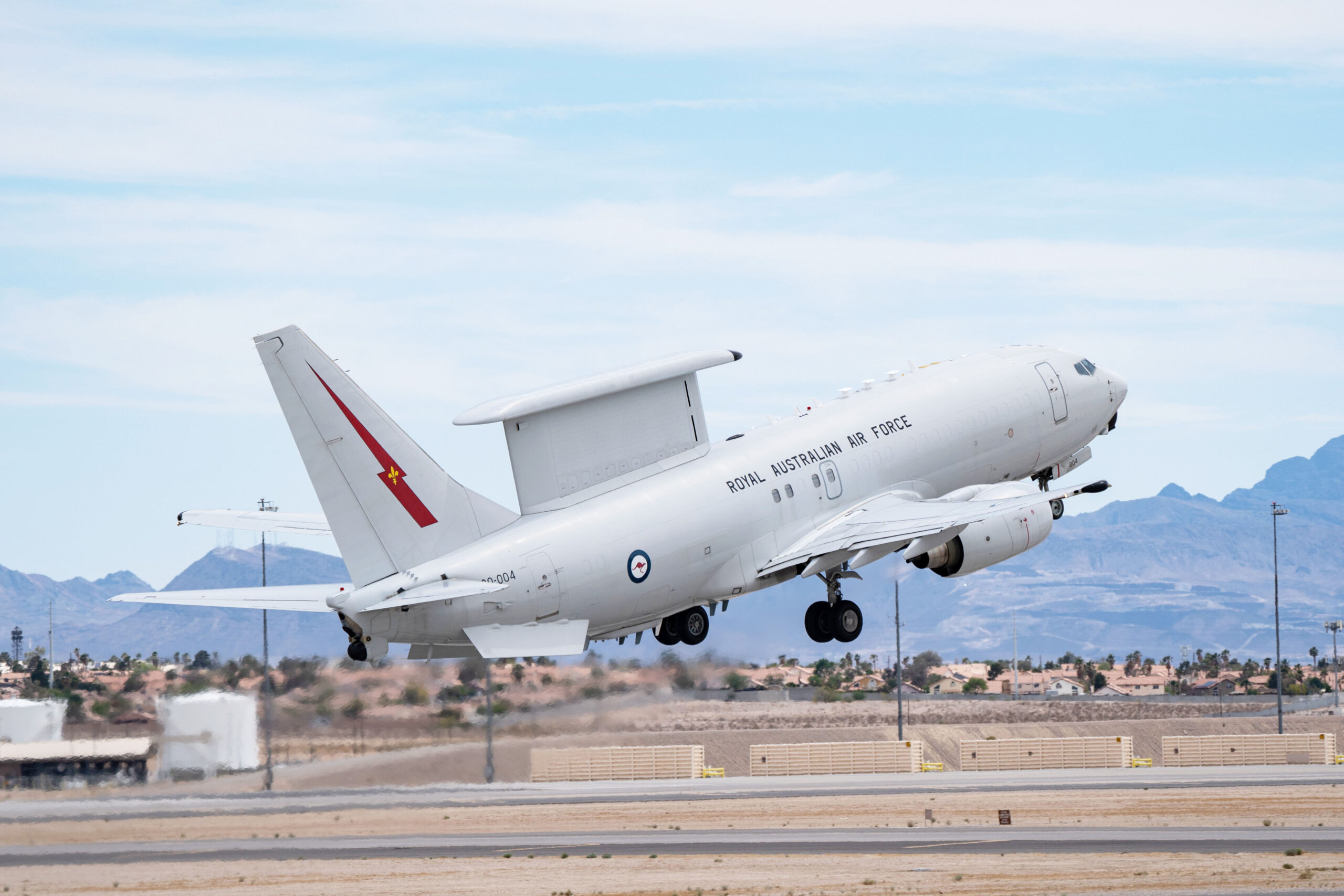
“I hope it’s the answer to everything!” CINC said, when asked about his hopes for the E-7 within the U.S. Air Force. “But that’s what we are testing out.” The 53rd Wing Weapons Officer also noted that, while in the past, AEW&C assets had frequently been used at fairly close ranges, the latest Black Flag involved pushing the E-7 “far away [to] test this thing out to the extreme limits of its capabilities.”
In providing the Air Force with an early look at a forthcoming capability, the involvement of the Wedgetail in this particular exercise is, in many ways, typical of the kind of insight Black Flag aims to provide.
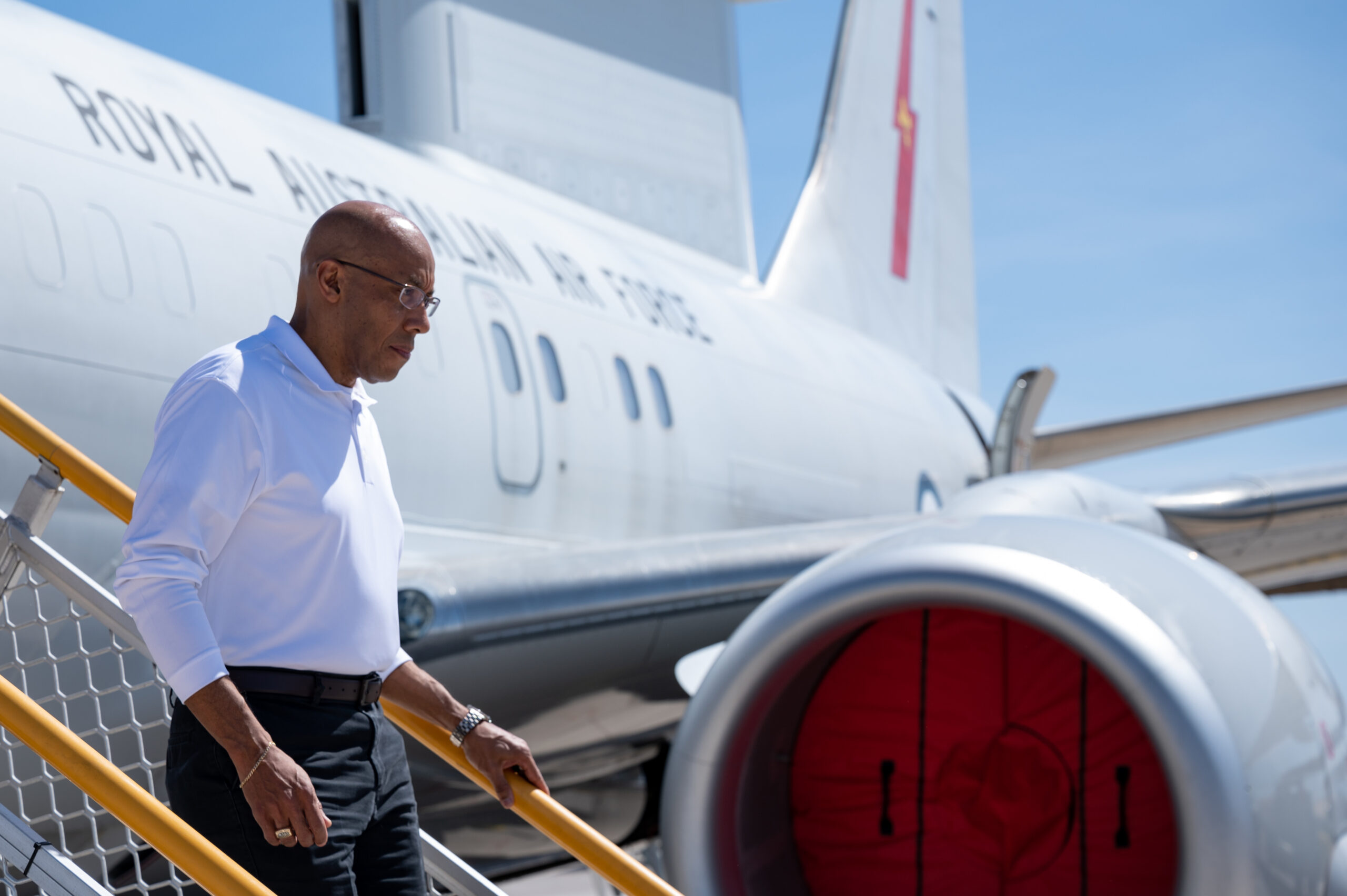
Bradley continues: “We are always talking about, from an operational test perspective, getting early looks at what would be called developmental test. We know the Air Force has gone out there to do a rapid prototype procurement of two E-7s. Regardless of where the Air Force goes with their total buy, what we can do is garner the TTPs that we’re getting from the Australian involvement and if [the E-7] becomes a US program of record in the future then we already have those TTPs already on the table.”
Involved in a large force exercise for the first time in this Black Flag was the Air Force’s new HH-60W combat search and rescue helicopter. The debut of the ‘Whiskey’ comes at a time when there have been concerns about the survivability of this helicopter in denied or contested environments, combined with the Air Force’s decision to reduce procurement to just 75 examples.

“We just got two Whiskeys in the 53rd Wing that started to bed down at Nellis and we’re expecting more,” Bradley explained. He acknowledged that there have been questions about HH-60W survivability but also voiced his confidence that the test community will find a way to operate the type effectively and to meet the evolving challenges of the CSAR mission.
“Search and rescue is part of our DNA and as a fighter pilot who’s going to push into some denied areas, we push in because we know someone is going to come get us [if we get shot down]. Survivable or not, we are going to figure out how to best go get our airmen when they need to be picked up. It’s on the Warfare Center to figure out what tactic we can come up with, with the equipment we have, to make sure we can guarantee the survivability of our airmen.”
Fundamental to testing the survivability of the HH-60W, and other blue air platforms in Black Flag is the adversary air, or red air community, boosted in this edition by the first involvement of contractor-operated F-16s flown by Top Aces, a potent new opponent that you can read more about in these previous articles.
Comparing Black Flag’s red air component to that which tests combat pilots at Red Flag, Bradley said: “The threats are similar, because we do fly on the NTTR. That’s something that the Air Force is working to continually advance, replicating the enemy as best as possible. That’s also why we’re moving in the direction of the Virtual Test and Training Center. Part of the whole test flag enterprise also includes the virtual environment, to move some things into the sims where you can better replicate a threat that you may not be able to replicate in real life.”
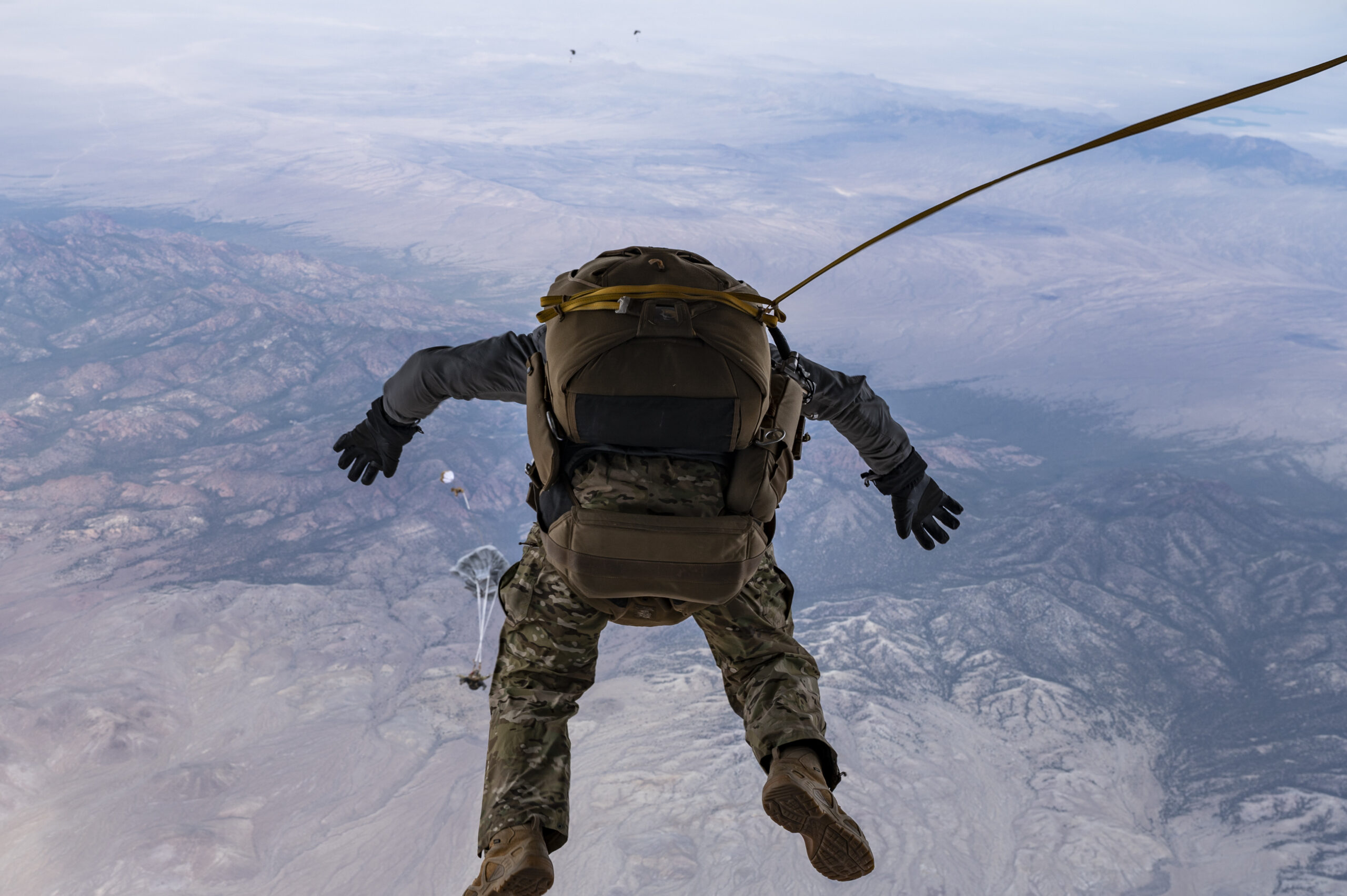
Despite the virtual environment, real-world threats are still very much a part of Black Flag, as CINC, an F-15E pilot, explains:
“From a test perspective, we look to build capability. We can scale things and move a slider between left and right, so you have less adversaries and less blue [forces], or more adversaries and more blue to test out our tactics. What we’ve done here is, for this Black Flag, we start off basically with some F-16s, to test geometry, timing, contacts, then flex all the way up to a large VUL [vulnerability periods, the main live phases of the proceedings, against modern threats]. There we have F-35s from both the Air Force and our Australian partners flying as red air — one of hardest radars and the most difficult threats we can fight against.”
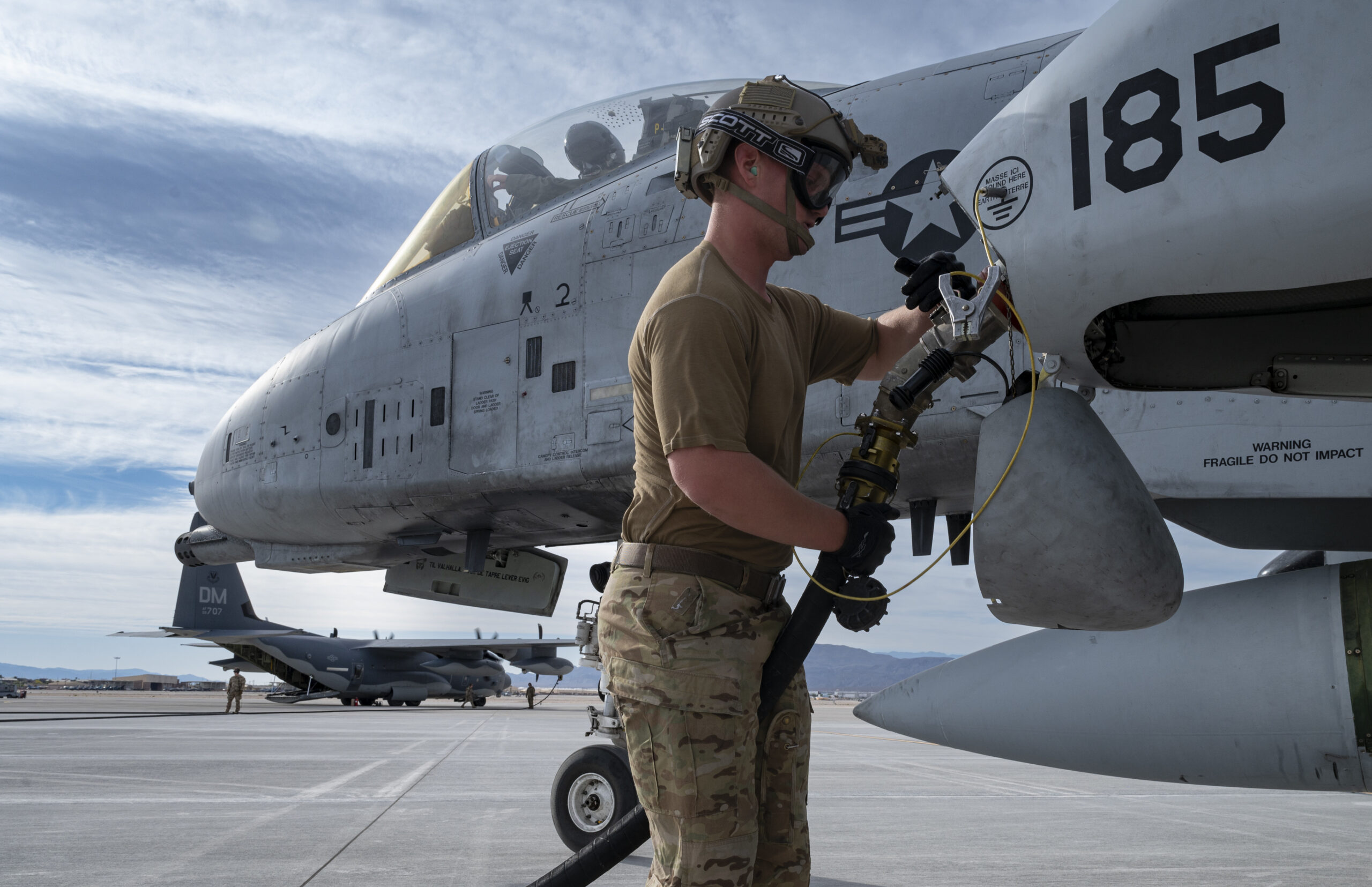
“Robustness builds up in the exercise to give us a capstone event so we can say we tested this thing with the best that we could possibly have with the resources at hand to give the warfighter the best estimate of what that tactic can do,” CINC continues. “Or if we need to go back to the drawing board, let’s start again, hopefully more in the virtual environment, to give more reps against a formidable foe.”
In the past, CINC explains, red air frequently involved more canned setups, with participants often flying a very scripted picture. “I’ve flown plenty of Red Flags in my younger days where we’d get briefed by intel one thing and then the aggressors would come out and fly a different game plan,” he continues. “Now [red air is] flying what we’d expect an adversary to fly. That way we can test against intel’s best assessment of what we would be fighting against. It’s not necessarily canned from the perspective of ‘Hey, MiG One, I need you to fly this exact line and this range and this maneuver.’ It’s more a case of here’s the mindset, here’s what we need to go and do, and we’re going to execute this game plan in accordance with intel’s assessment.”
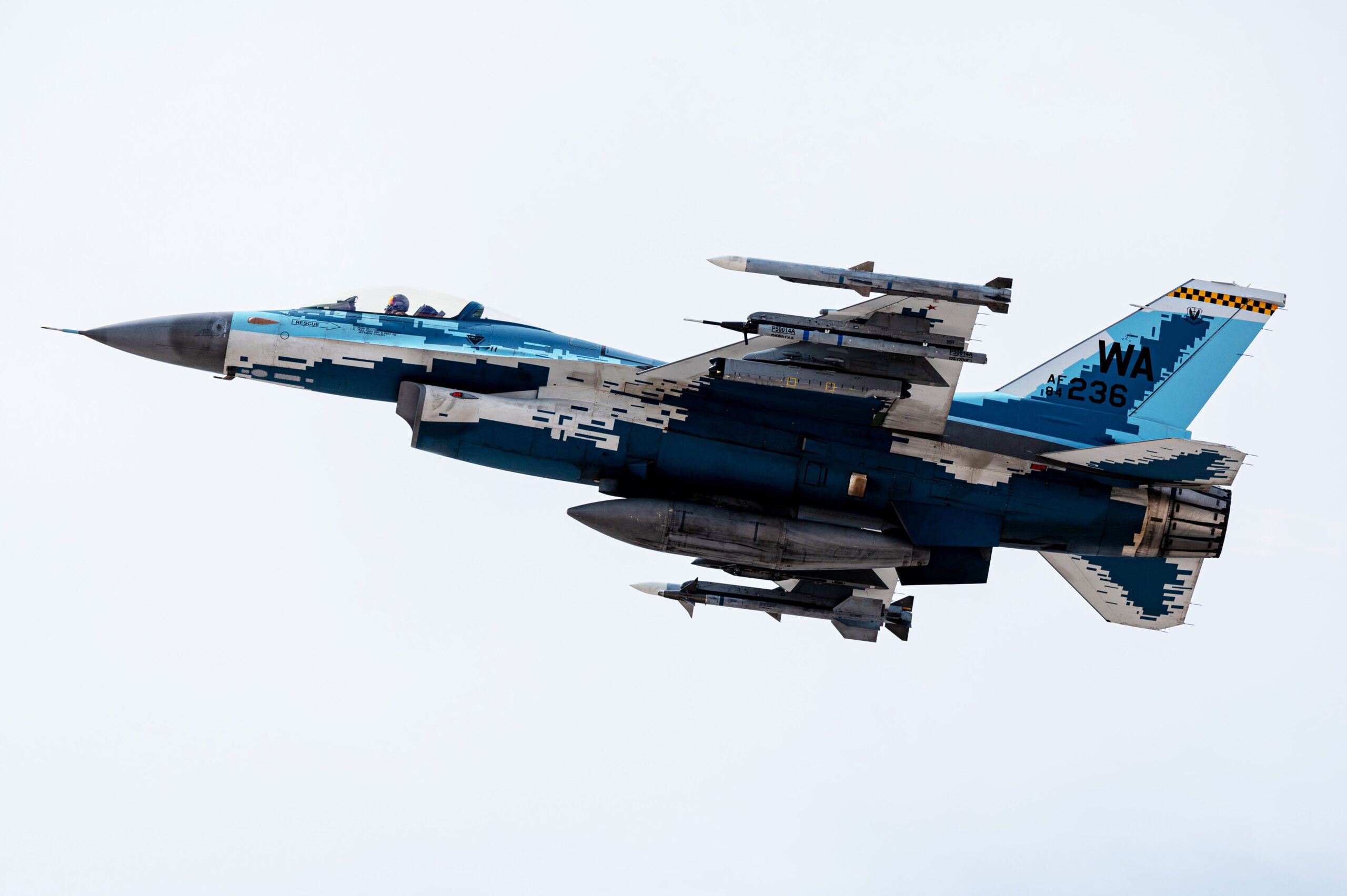
With the emphasis on testing new equipment and tactics, there’s also the very real possibility that Black Flag will increasingly play a role in Air Force ambitions to field new assets and capabilities far quicker than was the case in the past.
Bradley continues: “You heard what Secretary Kendall said, his Autonomous Collaborative Platform he’s moving straight to prototype and skipping EMD [engineering and manufacturing development]. Where I think Black Flag has a strength is we have very skilled aviators who are very strong on their established tactics in a known environment. I think if you allow Black Flag to be the sandbox for the USAF and the joint force and the coalition force, then you can bring some of these new ideas into the exercise, with very experienced aircrew, to quickly test whether something has capability and whether it has potential in the future to maybe accelerate that acquisition process.”
One concrete example of the kind of work that Black Flag has already helped accelerate is recent software improvements for the F-22, with the R1 and Mode 5 updates being pushed into a large force exercise and ensuring these enhancements could be pushed out to the frontline Raptor fleet quicker.
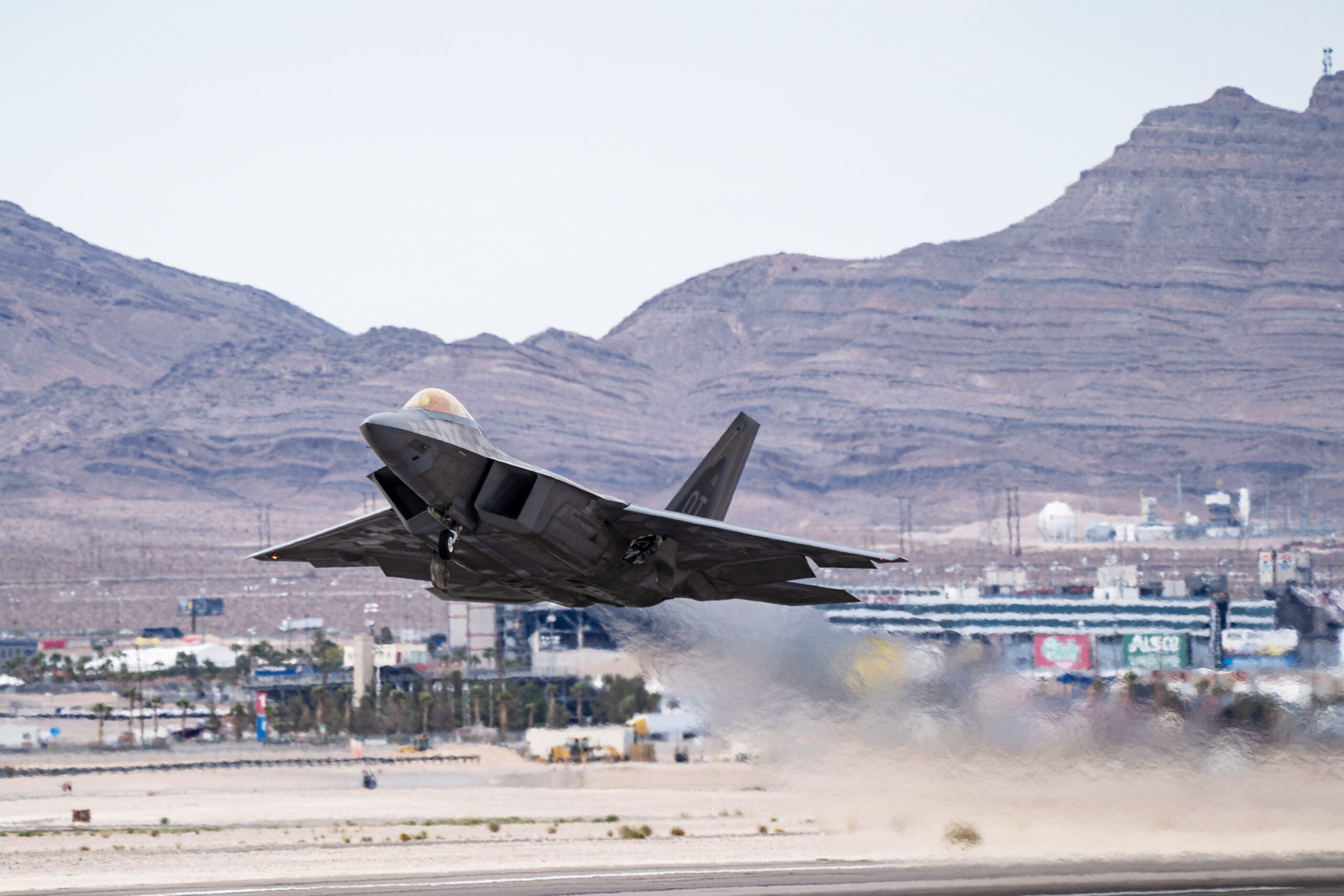
“The traditional operational test plans would be smaller scale, four Raptors against six adversaries, for example, to see if this new software works,” Bradley adds. “But when you throw it into Black Flag it’s almost like going from spring training to an actual game, and then you’re really wringing out a lot of those software capabilities and you’re getting quicker to the tactics that we deliver to the warfighter. Before Black Flag, we’d say ‘yeah it works, I think it’s tactically relevant.’ But now we say, ‘integrated with all the other forces, the joint forces, the coalition forces, here’s how it’s really going to provide a tactical advantage to the warfighter.’”
“The biggest part that this whole Black Flag brings together is integration,” Bradley continues. “If I can use a sports analogy, it’s American football, where your quarterback may work with the wide receiver on some routes, and your center may work with the quarterback, your running back may work with the quarterback on handing off. But until you bring that whole team together against another team you really don’t know how you’re going to do. And so a lot of what we do in operational test is that small task or part task testing, where you do the 2-v-2s or the 2-v-4s, or against one threat. But Black Flag brings the whole team together and that’s really where we’re going to find our value integrating together to develop those tactics.”
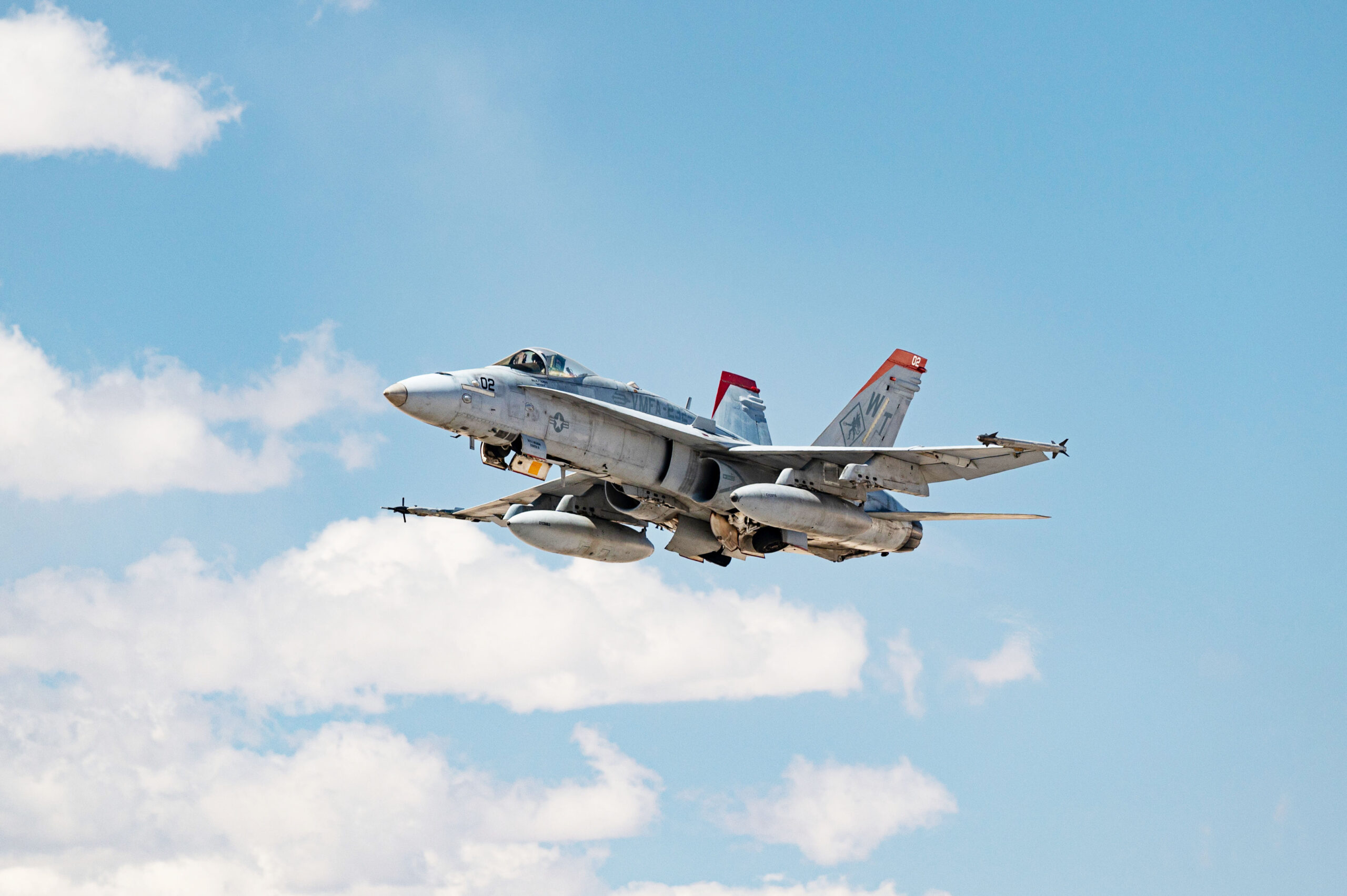
All this test work, of course, is intended to sharpen the Combat Air Force in real-world scenarios and China’s increasingly central role in future wartime scenarios is something that’s keenly felt among the Black Flag leadership, too.
“If you look at the 2022 National Defense Strategy and you look at the defense priorities — defend the homeland, defend against strategic attacks on the United States — and then it says deter aggression while being prepared to prevail in conflict, prioritizing China,” Bradley asserts. “And if you read Secretary Kendall’s public statements, it says China, China, China are his top three priorities and when he looks at the budget, if it doesn’t scare China he doesn’t want to do it.
“If you look at other parts of that, if you look at what’s going on in Ukraine right now, obviously Russia’s a formidable threat, too. But if you look at the Air Force Warfare Center at Nellis they have what’s called the Pacing Challenge Campaign plan because the pacing challenge is China. And so we’re definitely following our leadership’s lead on focusing against that advanced threat. We have to be ready. The 53rd Wing develops tactics, and we are trying to do the best we can to provide that tactical advantage through integrating with our coalition partners against the pacing challenge.”
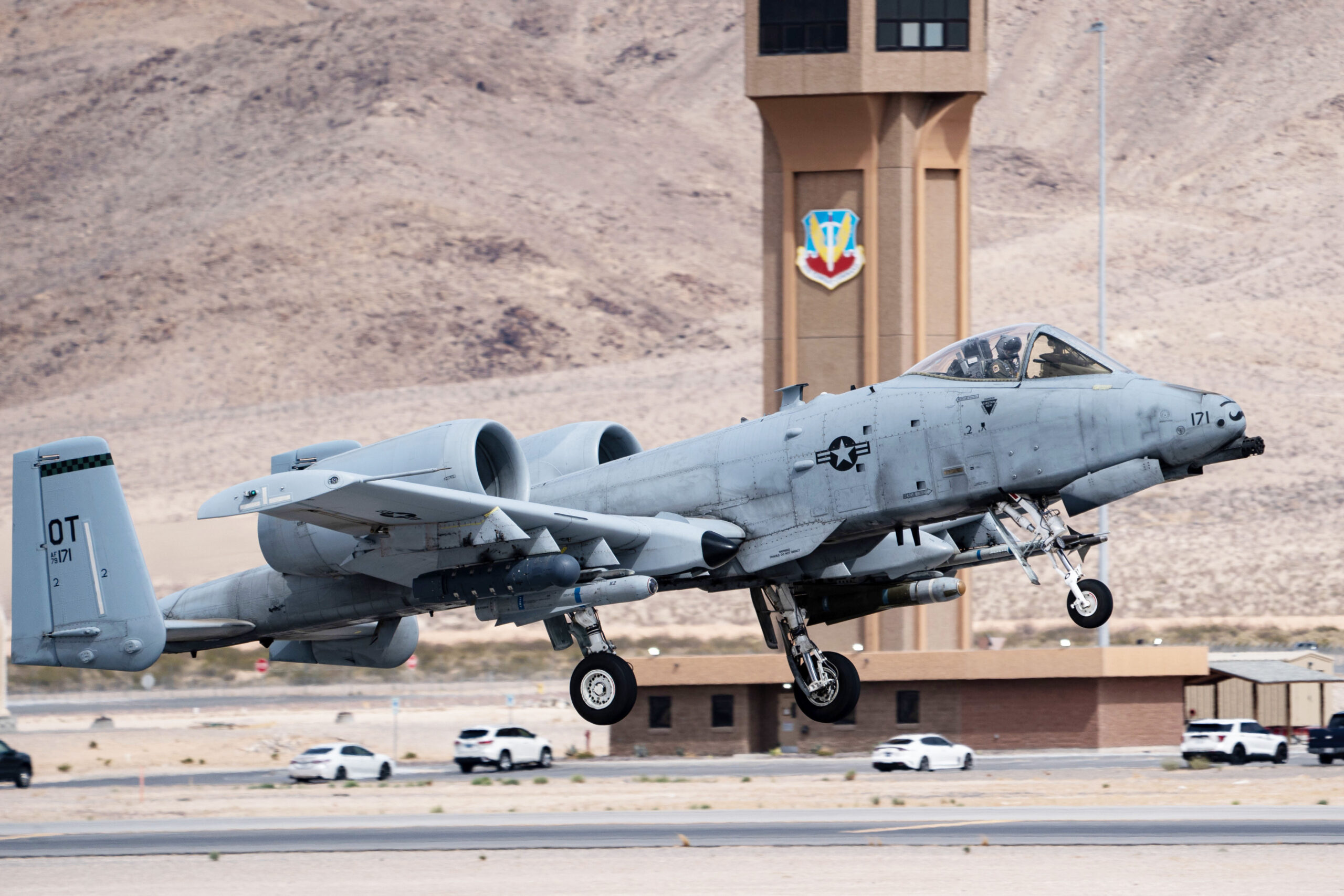
One of the interesting aspects Kendall raised recently was the difference in the kind of threat posed today by China, compared to the Soviet Union in the past. While the Soviets were essentially reactive, developing its armed forces by monitoring the United States and NATO, China, on the other hand, demonstrates much more independent thinking, developing its armed forces to reflect its own priorities — above all, displacing the United States as the preeminent global power.
“That’s exactly where we owe it to the warfighter to be innovative and develop new tactics,” Bradley adds. “We’re not going to get the newest weapons system tomorrow. But we can develop a new tactic tomorrow and while it’s very, very, difficult to overcome some of that capability deficit that we may be in, I think we owe it to the warfighter to do the best we can to develop new tactics and new ways of integrating. The innovative airmen we have in the wing, with their experience, can come up with a new way to employ the same weapons system that provides that tactical advantage and that overpowering capability.”
Another difference between the Cold War scenario, in which the overwhelming weight of forces were in Europe, a future contingency in the Asia Pacific region is likely to involve deploying forces across great distances and conducting combat at longer ranges than ever before.
For that reason, a key tenet of Black Flag is testing out the resilience of the long-range kill chain, the emerging concept by which targets can be detected and engaged by a variety of platforms with the aid of new battle networks, whether engaging targets in the air, on the ground, or at sea.
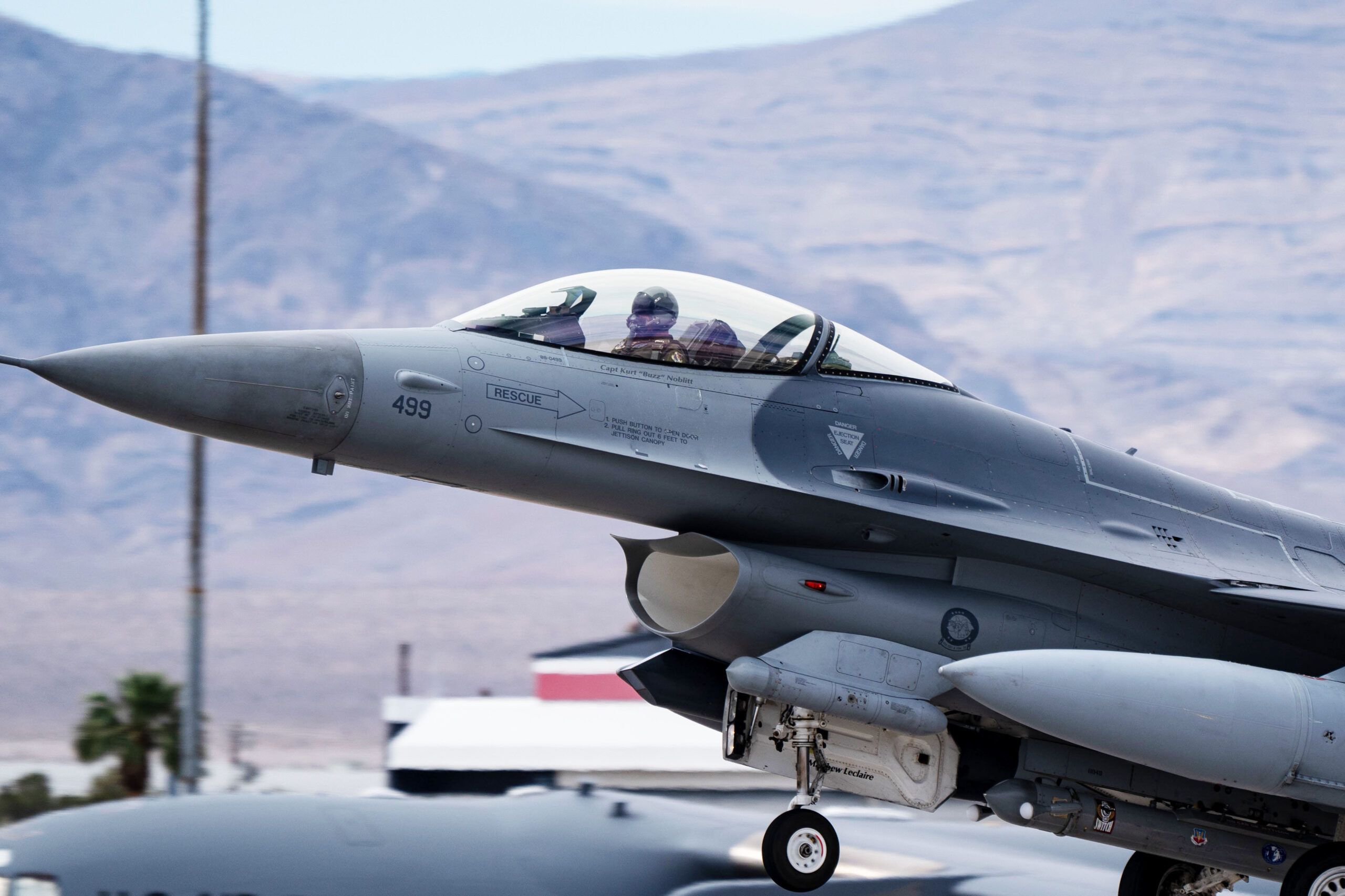
“If you look at China and Russia, both of them have capability to deny access across long range,” Bradley says. “In Europe, it’s a land war that we’re going to be involved with and in China going to be a maritime war. The Air Force put out a brand-new video that says ‘we own the air’ over the water and the land. And so that long-range kill chain is going to use a lot of Air Force assets, a lot of aircraft, and a lot of spacecraft that have persistent capability to find, fix, and track. I think if we can solve that long-range kill chain it’s applicable anywhere.”
Bradley also points to the “amazing minds” that can be brought to bear in Black Flag, whether from the Air Force Weapons School, or from the Navy’s TOPGUN or HAVOC, as well as from coalition partners. Ultimately, by providing a forum to share ideas, Black Flag and the other test exercises can help push change, not only in terms of fielding new tactics and equipment but also getting the most out of a currently fielded or older platform to increase the survivability and lethality for everyone.
Pointing to his colleague, Bradley adds: “What China doesn’t have is somebody like CINC who is leading these efforts. [China] can acquire something, but they don’t have the culture and the innovation and the capability and the technical prowess that we do. Guys like CINC that lead these efforts ensure we have that tactical advantage.”
Contact the author: thomas@thedrive.com
